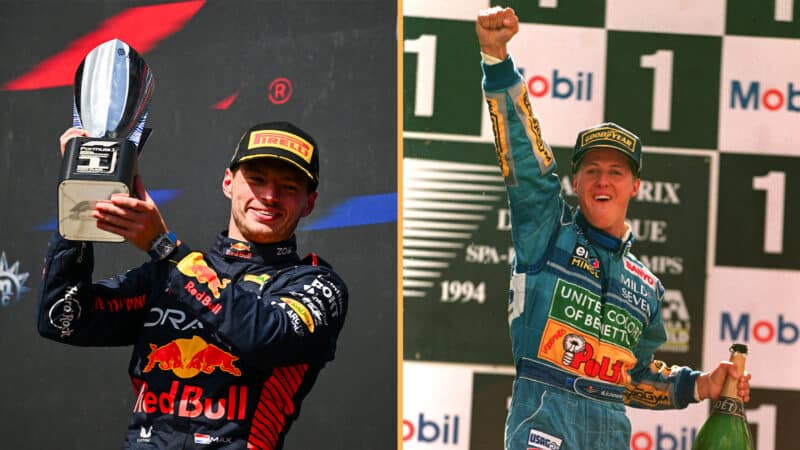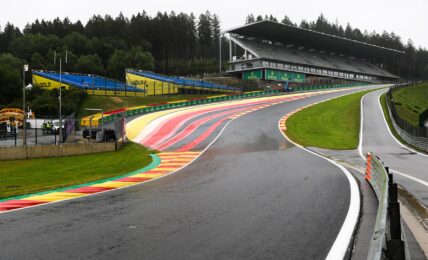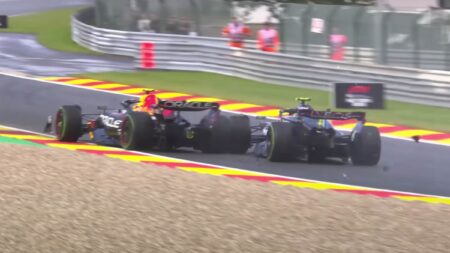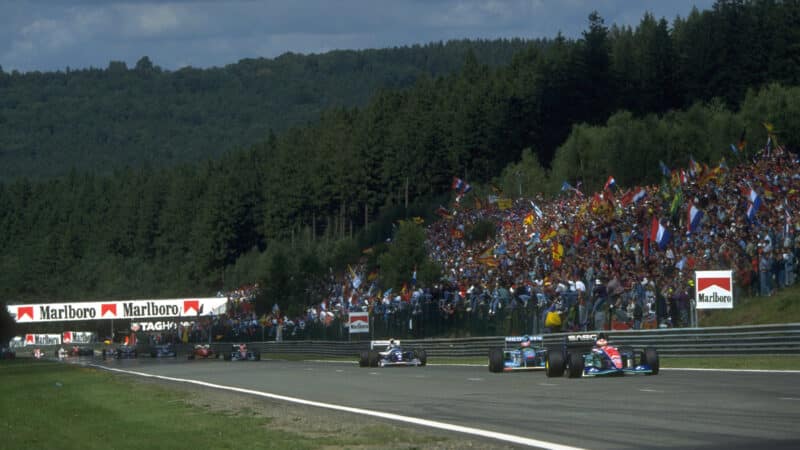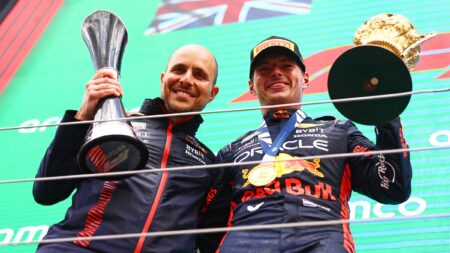Before explaining that, there’s some relevant background to understand. Even once Verstappen took a five-place grid penalty for a gearbox change, no-one was betting against him – he’d taken a dominant win here last year from 14th on the grid, after all.
As we discussed in the race analysis here on Monday, the circuit is perfectly configured to reward the best of both the Red Bull RB19 and Max Verstappen. Certain demands of car and driver are amplified in importance here. Aerodynamic efficiency – how much downforce you can retain whilst stripping back drag – is absolutely king here, with two sectors of largely flat-out running but the other demanding high-speed downforce for the long downhill sweeps of Rivage, Pouhon, Fagnes and the Stavelot approach. The RB19 generates a bigger proportion of its total downforce from the underbody than the others and less from the wings. Underbody downforce is about three times as efficient as over-body downforce in terms of the drag created. So even though the RB19’s aero efficiency helps it everywhere, Spa really helps it.
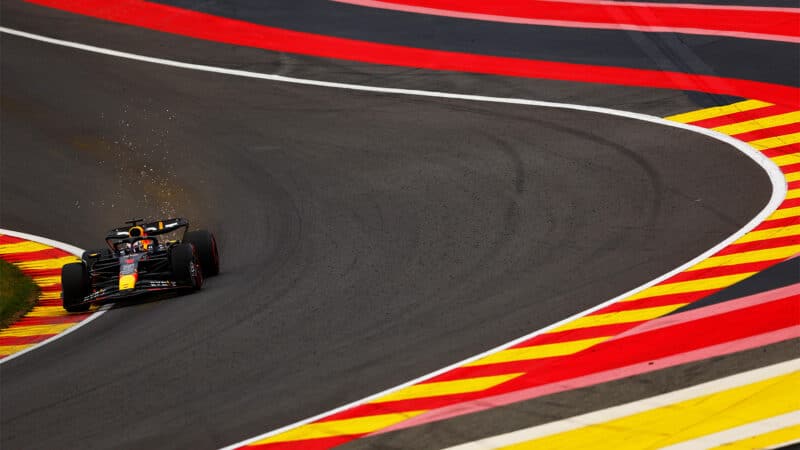
Max Verstappen’s RB19 is almost perfectly tuned to the peaks and valleys of the Spa-Francorchamps circuit
Red Bull
But that trade-off means there is also extra reward available for a certain calibre of driver, one who can live with a high-speed neutral to oversteer balance. Which even among F1 drivers is rare. F1 cars naturally want to understeer at low speeds and oversteer at high. The front/rear wing level is then used to give the best compromise between the two, but each driver has their own preference. If you can be relaxed about a neutral or mild oversteer balance at high speed, there is big lap time reward from having way less understeer into the slow corners. That reward is massive here.
I’ve watched both Michael Schumacher and Max Verstappen close-up in the raw, doing qualifying simulations through those middle sector sweeps and they are uncannily similar. With their cars clearly set up with a nervous balance, they require only the mildest of turn in and are then on a knife edge for the rest of the corner, appearing ready to fly off the road if there’s even a sniff of extra input. But they would sit there, serene on that knife-edge, like it was a big wide plank. Other cars would come by with a shallow bit of reassuring understeer, allowing the drivers to push on through the corner and be bold with the throttle. Michael’s throttle inputs here, just liked Max’s today, were always delicate and progressive; the speed came with the momentum on entry, the commitment, the “jumping up onto the high wire” as Mark Donohue would have phrased it. The others were balancing on the high wire but had climbed carefully onto it. Michael could jump straight onto it. As can Max.
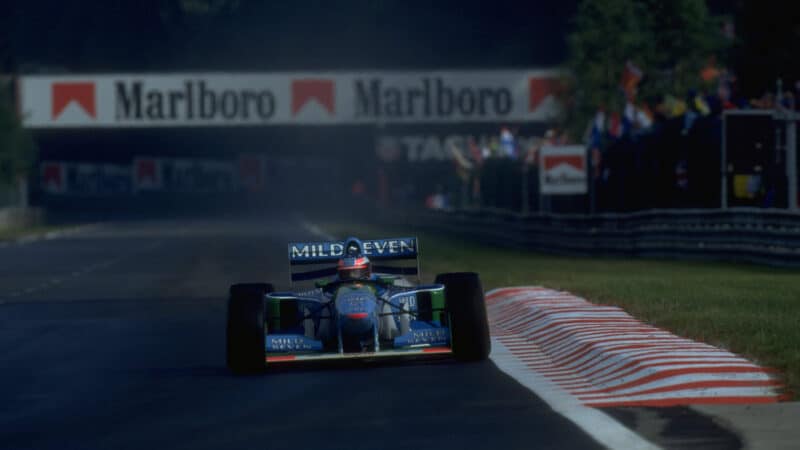
Schumacher on a knife edge during his dominant performance at the 1994 Belgian GP
Getty Images
But last weekend everyone’s preparations were compromised by the rain washing out practice and denying them crucial set-up time. This had happened in ’94 too. So Max’s car wasn’t in an ideal state of balance for the race, when loaded up with 100kg or more of fuel. Not only was it carrying a little too much understeer for his tastes, but the ride height wasn’t ideal either. Rear ride height is a crucial component of performance at any track, but the challenge at Spa is magnified because of the compressive forces through Eau Rouge, vertical loads smashing the floor into the track at very high speed.

